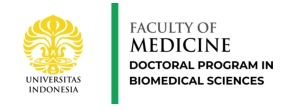By: Dr. dr. Sandy Vitria Kurniawan, M.Biomed
Idiopathic pulmonary fibrosis (IPF) is a chronic and progressive respiratory disease that primarily affects lung tissue, characterized by pulmonary fibrosis. In some cases, IPF can lead to a life-threatening condition known as idiopathic pulmonary fibrosis with acute exacerbations (AE-IPF). The annual incidence of AE-IPF is significant, and patients often face a survival rate of less than three months. Unfortunately, current therapies for AE-IPF are mainly symptomatic and come with potential side effects. This article explores a groundbreaking experimental study involving inhaled curcumin nanosuspension, offering new hope for AE-IPF patients and potentially improving their quality of life.
The Role of Angiotensin II in IPF Progression
Various studies have examined factors regulating lung fibrosis, with one key player being angiotensin II. This peptide binds to its receptors and triggers fibrotic changes in lung cells, leading to the progression of IPF. Conversely, angiotensin 1-7, which is generated when angiotensin II is converted by the enzyme ACE2, exhibits anti-fibrotic properties. Therefore, the balance between angiotensin II and angiotensin 1-7 plays a crucial role in IPF development.
The Limitations of Current AE-IPF Therapies
Current therapeutic approaches for AE-IPF mainly involve long-term oxygen therapy and the administration of corticosteroids or antifibrosis drugs. However, these treatments only address symptoms and come with potential side effects. Notably, studies have shown that antifibrosis drugs can reduce IPF mortality but fail to decrease AE-IPF cases. Thus, there is a pressing need for innovative drug candidates that can effectively combat AE-IPF while minimizing adverse effects.
Curcumin Nanosuspension: A Promising Therapeutic Solution
Curcumin, a compound derived from turmeric, has demonstrated various beneficial effects, including anti-inflammatory and anti-fibrotic properties. Unfortunately, curcumin’s poor water solubility has hindered its effective administration. Nevertheless, researchers have developed curcumin nanosuspension formulations, which address this limitation and offer an ideal option for specific, localized effects within the lungs.
An Experimental Breakthrough: Inhaled Curcumin Nanosuspension and Corticosteroids
To explore the potential of inhaled curcumin nanosuspension in AE-IPF treatment, an experimental study was conducted on a rat model. The rats were divided into six groups: normal rats, untreated AE-IPF rats, AE-IPF rats treated with prednisone alone, AE-IPF rats treated with 1 mg/kg inhaled curcumin nanosuspension, AE-IPF rats treated with a combination of prednisone and 10 mg/kg inhaled curcumin nanosuspension, and AE-IPF rats treated with 10 mg/kg inhaled curcumin nanosuspension alone. The inhaled curcumin nanosuspension was administered through nebulization, and the therapy was conducted over a period from day 8 to day 14.
Promising Results: Suppression of AT1R and Reduced Fibrosis
The results of the study were highly encouraging. The combination therapy of prednisone and 10 mg/kg inhaled curcumin nanosuspension demonstrated the ability to suppress AT1R (angiotensin II receptor type 1). This led to an increase in angiotensin II binding to receptors with anti-fibrotic properties and the conversion of angiotensin II into angiotensin 1-7, which also possesses anti-fibrotic effects. Consequently, fibrosis-related parameters, including fibrosis score, collagen density, air area in the lungs, and oxygen saturation, showed significant improvements.
Conclusion
The development of effective therapies for idiopathic pulmonary fibrosis with acute exacerbations is of utmost importance, considering the limited treatment options and high mortality rates associated with the condition. The experimental study on inhaled curcumin nanosuspension, in combination with corticosteroids, has shown promising results in rat models of AE-IPF. This breakthrough research opens new possibilities for further investigations and potential applications in human patients. By leveraging the anti-fibrotic properties of curcumin, this therapy offers hope for improving the quality of life and prognosis of AE-IPF patients, representing a significant step forward in the fight against this devastating respiratory disease.

